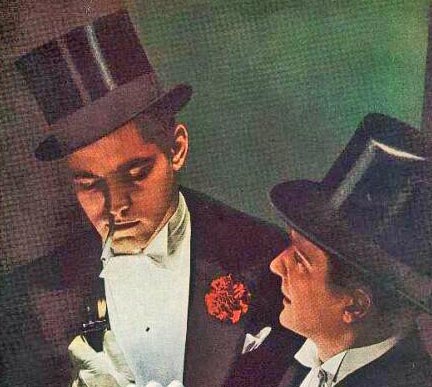In the archives, each piece of the Duke of Windsor’s clothes is wrapped in special protective paper and stored hanging in a kind of vault. Opening the pieces of paper to reveal the suits is a bit like discovering Inca gold or Tutankhamen’s burial crypt. Flashlights blinking, incense smoldering and then suddenly appearing out of the mist the twinkling luminescence of a tweed suit!

The first eyeful of suit was of absolutely splendid tweed. The first fistful of suit was at the shoulder where I immediately recognized Scholte, forerunner of AS and the other tailors who practice the noble art of the natural shoulder. If I closed my eyes I could be feeling my own jacket’s shoulder, a distant relative: the feeling of dense, rich cloth and nothing more. But this cloth was something I had not had the occasion to feel very often. It was very dense and tightly woven cloth, light in the hand for its weight, hand woven cloth that had taken someone weeks of labor.

There are a few topics that are likely to recur in this description of the Duke’s clothes so good sense would have us define the major points straight away: quality of fabrics used, supreme quality of the handwork, overall sobriety of design and perfection of balance demonstrated. It seems to me that this about summarizes what many bespoke clients are after when they choose cloth and visit tailors. Windsor had it all.
Design
The most striking aspect of the design of the suits was the absence of design.
As I went over the coat with my tape measure, hoping to discover some element of elegance heretofore undiscovered, it became quite clear that the clothes were textbook Savile Row. Back balance, front balance, lapel width, lapel height, buttoning point, pocket height, back neck measure, one by one I clicked them off and noted each bit of data carefully. The numbers confirmed the lack of any design anomaly. The only thing out of the ordinary was the shoulder seam recessed to a point half an inch further back from where one might expect to see it. The vents in the jacket are also shorter than what we might expect to see:

The personal features of Windsor’s clothes, what we might call the design features, were hidden from sight. They were features intended to improve his comfort not impress the beholder. No ornaments to be found here. Instead of knick knacks, bells, whistles, accessories, or add-ons, one notes simplicity. For example, no opening button holes:


An example of a personal Windsor touch can be found in the buttoned in boxer shorts feature.

The Duke also favored two back pockets on his trousers, one with button and one without. This was to make accessing his cigarette case easier.

Let’s put another mystery to rest: the crescent pockets are without flaps.

So my first thought on seeing Windsor’s clothes was the absolute futility of both fashion and design: the two charlatans who have successively lured and betrayed men for decades. Take Windsor’s clothes, grow them to fit your size and you will see how actual and modern they truly are.
What has changed since 1932 is the quality of the materials and hand work. Stay tuned for Part II.
